
© 2010-2024 by Fine Arts of the Southwest, Inc. All rights reserved.
Unauthorized reproduction or use is strictly prohibited by law.
An exceptional Hopi black-on-cream "Sikyatki-Revival" Style low-profile pottery bowl/jar by Zella Cheeda, c. 1930’s-40’s
ZELLA CHEEDA (1901-1997), also known as “Antelope Woman”, was one of the very finest Hopi potters over a large part of the 20TH Century. She could go toe-to-toe with the very best of them; from Nampeyo, Annie and Fannie to Paqua Naha and Grace Chappella and in later days, Dextra Quotskuyva, Priscilla Namingha, Garnet Pavatea and Lena Charlie. Zella’s home village was Sichomovi in the middle of the Hopi First Mesa next door to her Nampeyo family neighbors and colleagues.
Over the course of her very long forty-plus year career, Zella Cheeda made excellent “Sikyatki-Revival” style pottery vessels in the forms of bowl/jars such as this one, open bowls and upright jars. She was perhaps best known for her perfectly formed vessels and always beautifully created and painted stylized bird forms. This beautifully-made, low-profile Sikytaki-Revival bowl/jar featuring a very large turkey pictorial image is a perfect example and completely proof positive of her very considerable artistic and technical abilities. The formation and shaping of the vessel, the painting, the exceptional all-over stone polishing and the extremely difficult to achieve high-temperature coal firing are all absolutely first rate.
The bowl/jar is a swoopy very low-profile form dating back to the ancient Sikaytki-Period (1375-1625 A.D.) of Hopi pottery and as you can see it has the distinctive bone-white almost porcelain color of the ancient Hopi Sikyatki-Period pottery which charcteristaaly was fired with ultra-high temperature burning Lignite coal found at the Hopi’s Antelope Mesa. The intense hardness of the highly-fired vessel walls provided by coal firing allows for thinner, more daringly shaped and swoopy vessel walls on the part of the pottery maker, exactly as the daring low profile shape of this jar demonstrates. Also, as an additional and lovely aesthetic side benefit, coal firing provides beautiful yellow-ish to light orange firing blushes on the pottery surface.
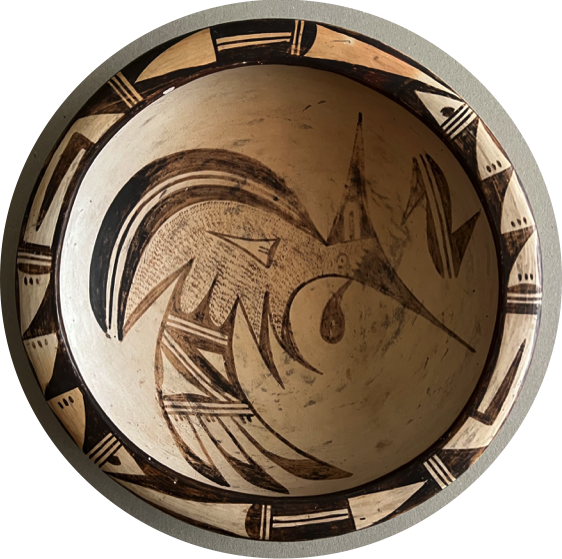
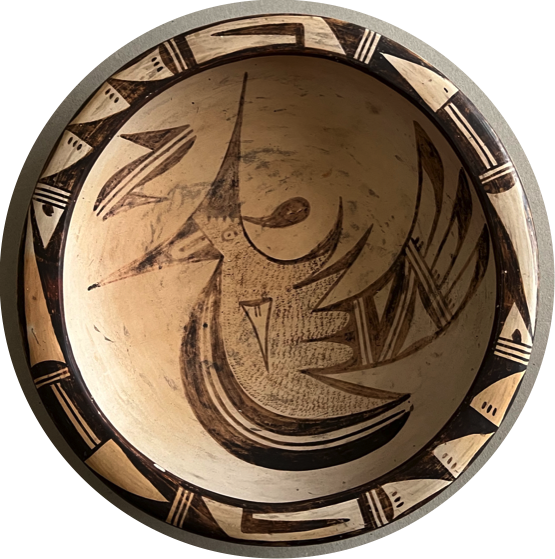
The bowl/jar measures a very nicely-sized 10 3/4" in diameter and is 2 3/4" in height. It is in very good condition overall, the vessel is completely intact with no cracks, no significant chips and no restoration or overpainting in evidence under Ultraviolet light examination. There is a considerable amount of abrasion wear to the interior painted design visible, but this while a bit unfortunate still lends a great deal of character and patina to the piece. The bowl/jar is properly signed with Zella Cheeda’s antelope insignia on the bottom which is partially worn off but still quite visible.
This is probably one of the earliest iterations of her signature and likely dates the bowl to the late 1930’s or early to mid-1940’s when Hopi potters were first beginning to sign their pieces greatly encouraged in this by Mary Russell Ferrell-Colton, the energetic Co-founder and Director of the nearby Museum of Northern Arizona in Flagstaff who sponsored an annual Hopi exhibition showcasing pottery, jewelry and Kachinas beginning in the 1930’s.
This bowl/jar is a beautiful historic piece made by a distinguished artist 80-90 years ago. It is at once a beautiful encapsulation of artistry, history, tradition and enduring culture.
Price $1,150
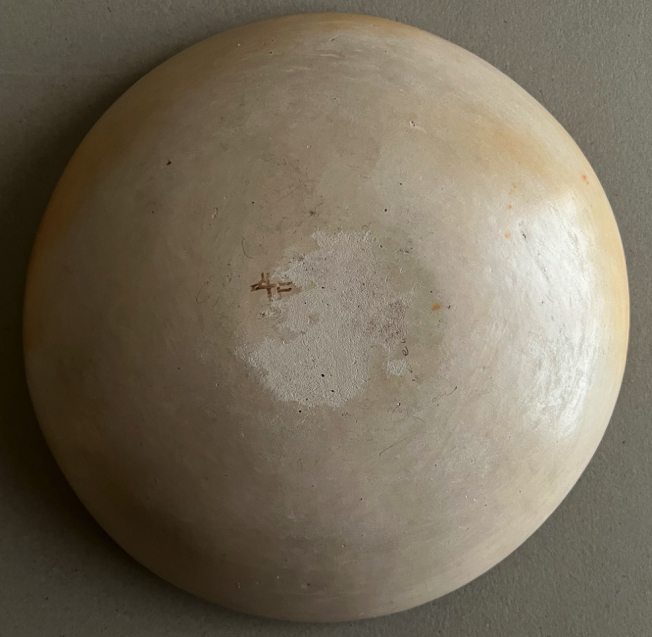
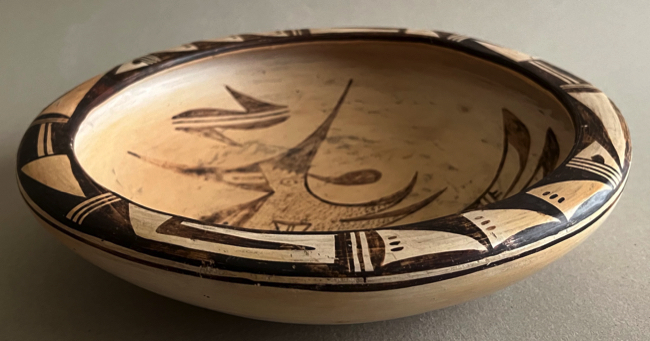
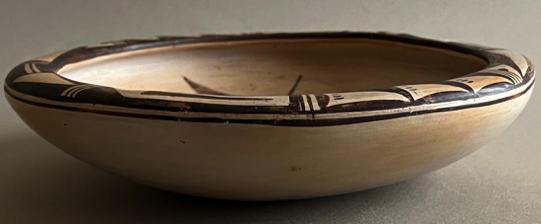
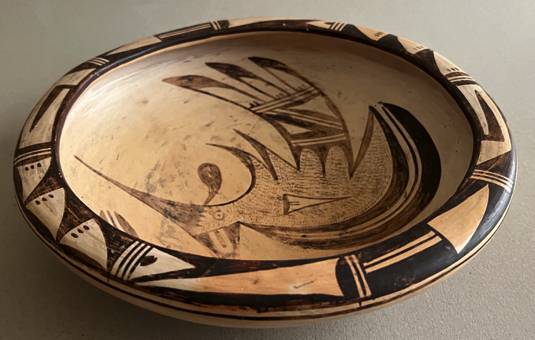
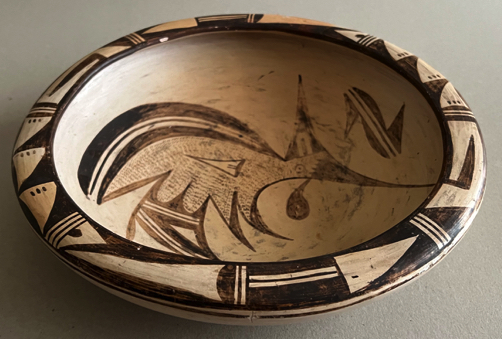
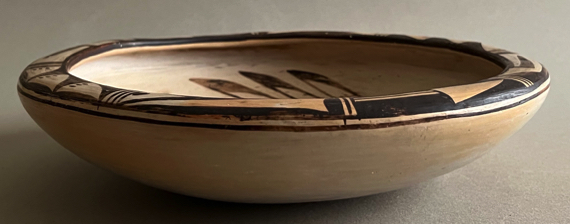
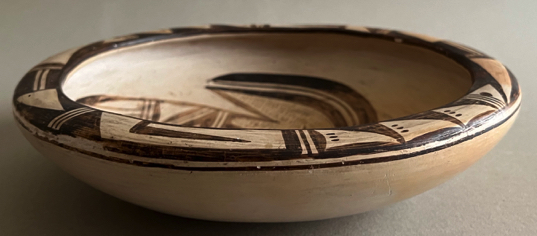
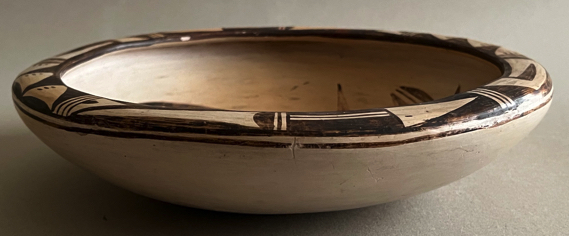
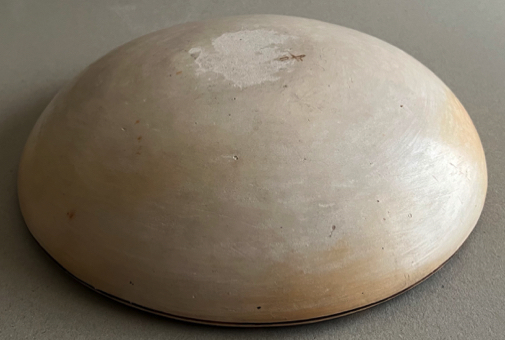
It is interesting to note how the stylized bird design on this vessel visually reads in both directions.
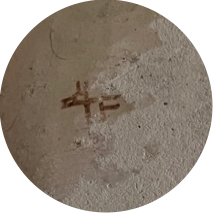
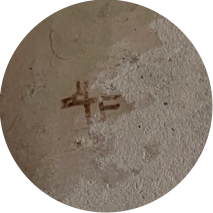
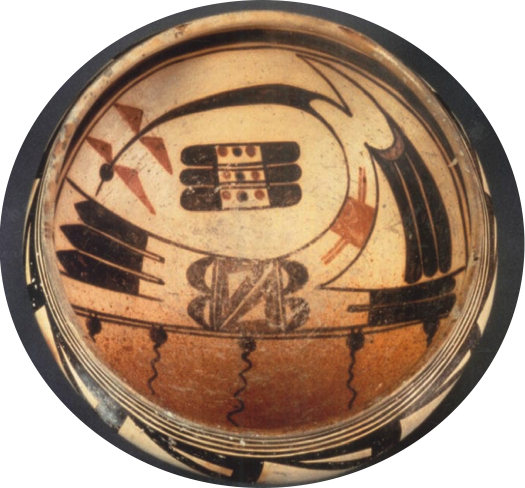
Above, an ancient Hopi Sikyatki Polychrome type low-profile bowl/jar with stylized bird design, c. 1500-1600 A.D.
Photo source and © Peabody Museum, Boston MA